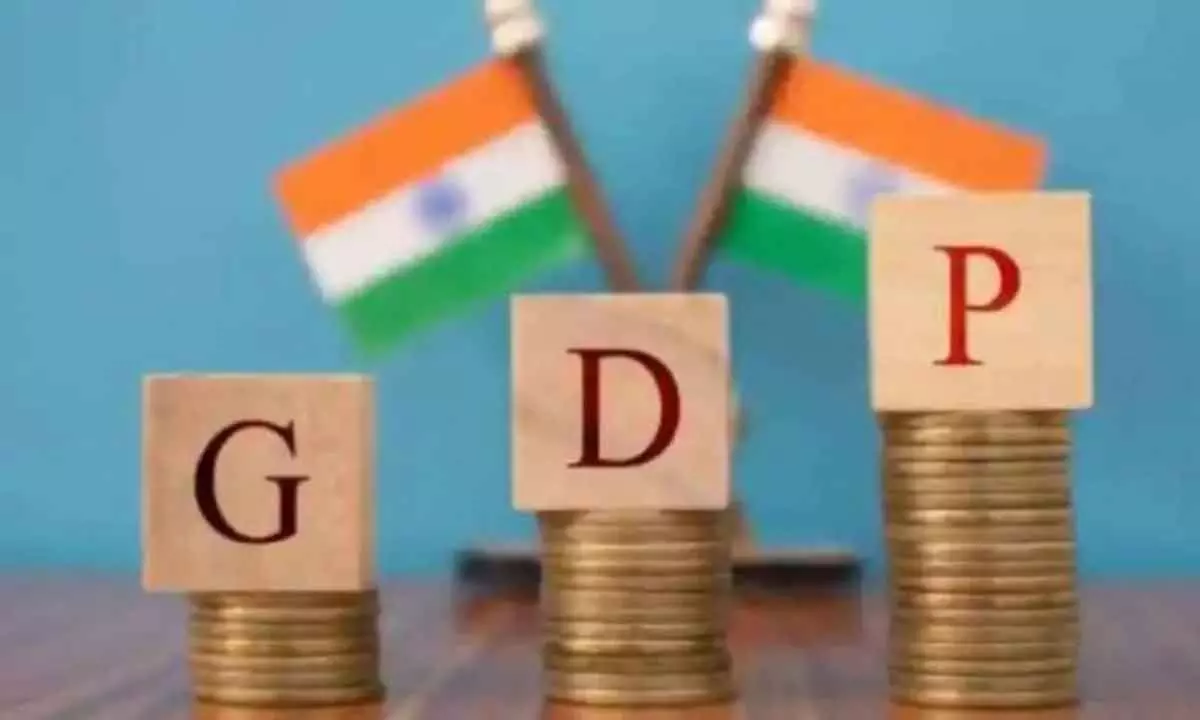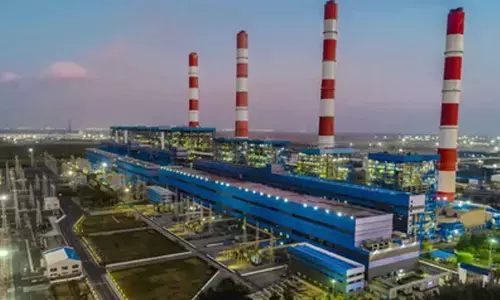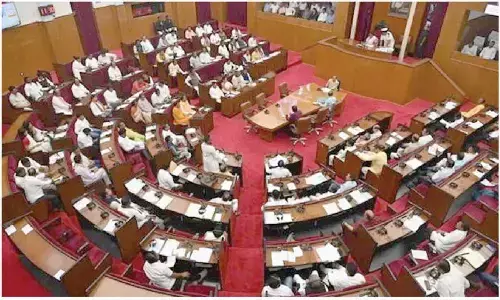Global headwinds continue to pose a threat to India's high growth rate

India's GDP to grow 7% in FY23: Acuite
India may be growing fast relative to the rest of the world, but it is not expanding at the pace needed for sustained and equitable development
The Indian economy seems to be in good shape compared to most others around the globe, judging by the perspective of international agencies. The World Bank has revised its growth forecast for India from 6.5 to 6.9 per cent for fiscal 2023 while Fitch Ratings has retained its outlook of 7 per cent for the year. It seems clear that this country is set to become one of the world's fastest growing economies in the current fiscal. But the upbeat news has obscured the rest of the story which is that the next two years could see a slowdown in growth. Both the World Bank and Fitch have recognised that the good times cannot continue for too long, given global headwinds. They have therefore scaled down their expectations for the medium term.
The Reserve Bank of India has taken an equally cautious approach while scaling down its growth target for the current fiscal to 6.8 per cent from 7 per cent earlier.
As for the World Bank, it has pegged growth for next year, fiscal 2024, at 6.6 per cent. Fitch has downgraded its forecast to 6.2 per cent for that year and then 6.9 per cent for fiscal 2025. This is lower than its earlier projections of 6.7 and 7.1 per cent growth respectively for these two years. For the current year, other institutions like the International Monetary Fund are aligned with the central bank in predicting growth to reach 6.8 per cent. It is thus generally accepted that India is one of the few countries that has managed to weather the storm of geopolitical events, high inflation and rising interest rates without a steep downturn in economic performance. One of the reasons cited for the country's ability to be relatively insulated from global factors is robust domestic demand. Its large internal market makes it relatively less exposed to international trade flows.
At the same time, both the Bank and Fitch Ratings have pointed out that it is not completely shielded from events in the US, the Euro area or China. For instance, the global economic slowdown will affect exports. The impact has already begun with exports in October this year having contracted by as much as 16.7 per cent. This reverses the trend of consistently rising exports over the previous 20 months. Not only that, the previous fiscal had been marked by outbound trade flows touching a record level of 418 billion dollars.
The dip in export growth in October was in tune with global demand as the effect was felt across most non-oil categories including handicrafts, textiles, iron ore, chemicals, engineering goods and gems and jewellery. Textiles, a key export commodity, fell by as much as 41 per cent during the month while apparel exports dipped by 21 per cent. In this context, the ratings agency has noted that monetary policy tightening and high inflation have also contributed to a slowdown in imports, an easing in personal loan growth and falling purchasing power. It comments that tighter financial market conditions are weighing on demand for capital goods which serves as a leading indicator for investment. It concedes, however that there is economic resilience in upbeat labour market conditions with unemployment easing and labour participation increasing.
On its part, the World Bank has observed that 6.6 per cent growth, as projected for the next fiscal, is just not fast enough for India to become a developed country by 2047. It has to grow by at least eight per cent annually to reach this goal.
It is thus evident that India may be growing fast relative to the rest of the world, but it is not expanding at the pace needed for sustained and equitable development. One of the key factors contributing to slower growth is the fallout of volatility in international oil prices. A country that needs to import over 85 per cent of its hydrocarbon requirements must carefully watch the state of the world's oil markets. The past year has shown that geopolitical developments can seriously disrupt any projections for oil prices in the short and medium term. India's budget planners had envisaged that global oil prices would remain in the range of 75 to 80 dollars per barrel in 2022-23. But the situation changed rapidly after the Ukraine war began and prices soared to 130 dollars per barrel. Though these moderated subsequently, the country's exchequer will have to absorb the burden of higher oil prices which could be about 95 to 100 dollars per barrel by the end of the current fiscal.
Oil markets have cooled down over the past month but there is no certainty at all over the prospects for next year. Much will depend on geopolitical developments including the scenario in China which is the world's largest importer. A rise or fall in demand in that country will be a major driver of global prices.
So there may be much positive news on the economic front but there are also clearly many uncertainties over growth being sustained at higher levels in the coming years. Much will depend on external factors including the war in Ukraine and the resulting supply chain disruptions. The aggressive rate hikes of global central banks will equally send ripples around the world while the situation in China including the protests against the zero Covid policy will also have an impact. In other words, India cannot be completely insulated from the external environment. Improved domestic economic indicators like higher tax collections, better agricultural output and surging demand may have improved growth prospects considerably but global headwinds continue to pose a threat to higher growth prospects.



















